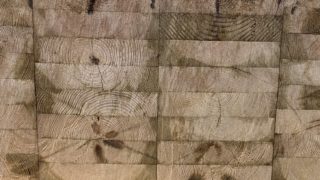The use case demonstrates how Elop Insight can measure the depth of the floor slabs in a warehouse made of fiber reinforced concrete, providing accurate depth mapping and detecting potential problem spots, ensuring the safety and stability of the structure.
Elop Insight ultrasonic scanner is designed to penetrate through fiber reinforced concrete, a material widely used in floor slab construction, and map the depth with precision. Accurate depth mapping is crucial to avoid problems such as punching shear and to counter differential moments in relation to dead loads and live loads, such as storage. Moreover, the device uses rolling capability, which can perform long scans in a short time, making it highly time and cost effective for your project.
In a recent case, a construction company contacted Field, a technology company focused on sustainability and geodata, to measure the depth of floor slabs in a large warehouse. Tobias Jokisch, a Senior Geophysicist at Field, was assigned to the project and opted to use the Elop Insight scanner because he knew it had previously proven effective on steel fiber-reinforced concrete
The ideal depth according to the structural drawings was 13.5 cm with a minimum threshold of 11cm. Elop Insight measured an average depth of 12.5cm. This provided a verification that the depth was above the threshold, offering peace of mind to the owners. Additionally, the equipment detected some spots where the actual depth was close to the threshold, which was shown in the scan profile below. “Now that Elop Insight is retrofitted with a trolley for easier data capture, the job could be done both quickly and cost-effectively,” further mentions Tobias Jokisch.


By Courtesy of Field/Tobias Jokisch
The scan profile with the markings of spots where the depth of concrete was thin around 11cm

This is how the depth is measured by Elop Insight
Emir Evlic, CEO of Elop Technology, said, “We are thrilled to offer a solution to the building industry that will change the way structures are verified. Our device is capable of penetrating fiber reinforced concrete and providing a verification of the actual geometry behind the concrete efficiently. No longer will owners have to worry about the depth mapping of their newly built structures.”




